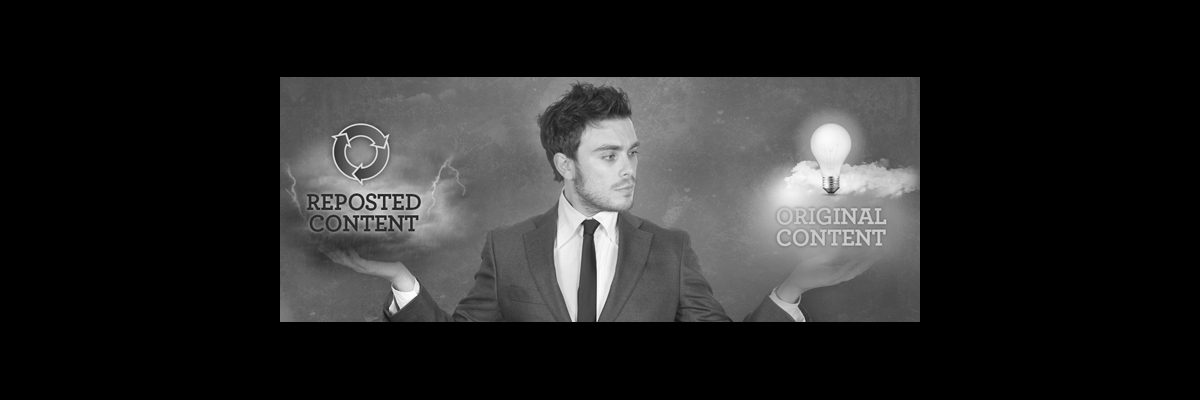
The Pitfalls of Content Curation
Content curation, a niche content marketing technique that works well when all the stars are aligned, is being overhyped. As a result, companies are being led down a path where they will ultimately be disappointed.
Allow me to explain why B2B firms should be cautious about diving into a content curation program:
Content curation is no shortcut
Firms that look at curation primarily because they don’t have the talent for content creation should keep looking. Finding, reviewing, organizing, sharing, and building a market identity around curation are not easy tasks.
If you’re in a niche that’s swimming in content (e.g., SEO or graphic design), finding and sharing unique content will take an enormous amount of time. Even if you are successful, there remains the task of finding and nurturing an audience of prospects and/or referrers. I’m not saying it can’t be done, but it can’t be done on the cheap.
Limited online demand
If you’re in a niche where original content is sparse, your content curator will be as idle as the Maytag repairman. In the packaging industry, for instance, I’ve noticed that a lack of online content reflects a lack of existing online demand. Even when I’ve been successful in finding and sharing great content, there simply are not throngs of people starving for information about topics like corrugated shipping boxes or product labeling solutions.
Of course, there are exceptions. People have quite an appetite for content about sustainable packaging—and if you’re lucky enough to have a business in that niche, content curation could be for you.
If you’re not active in that niche but want to capitalize on the sustainable-packaging trend by curating content—you run the risk of confusing people about your brand. In all likelihood, the curation gain won’t be worth the branding risk.
Curation has downsides
Curating content that’s not aligned with your brand is one significant business problem, but there are others:
- Thought leadership is best served when firms create their own content, rather than sharing someone else’s.
- Sales leads may be redirected to competitors when you promote their content.
- Brand image may deteriorate if people think your competitors demonstrate more success in or knowledge of your industry than you do.
If it comes down to content creation—which when properly executed has no pitfalls regarding thought leadership, lead generation, or branding—versus content curation, which does, the choice is obvious.
B2B has limited content availability
The marketing community shares information freely; it’s one of the things I love about this business. In the enormous B2C world, information also flows freely. The B2B world is much different.
Most B2B firms are secretive by nature. They are reluctant to publish content that talks about customers or offers their rivals competitive insight of any kind. This is why meaningful content is so often so hard to come by, let alone curate.
In addition, juicy B2B content is often closely guarded and proprietary, and it comes at a cost.
Going back to corrugated shipping boxes: Many people would love to get their hands on reliable statistics about global or regional price movement, capacity, and demand. Unfortunately for curators, most of that information is produced by industry associations that charge a hefty fee, require a subscription, and restrict sharing.
Content commentary beats content curation
A happy and effective middle ground is content commentary. One of my favorite blogs is Peep Laja’s ConversionXL. One of his techniques is to gather landing pages and critique them. A good example is 21 Ways You’re Screwing Up Your Landing Pages (And What To Do About It.
The curation side of this post is extremely helpful, in that the average reader doesn’t have the time or expertise to hunt down examples of landing pages that illustrate certain marketing points.
The commentary side of this post is also extremely helpful, in that his suggestions are relevant, extremely useful, and immediately applicable.
All in all, this is a highly effective hybrid of curation and creation that has terrific potential in many niches.
FAQ curation: Another effective option
Any B2B with a sales department, website analytics, or a keyword research tool has a curation-commentary gold mine right under its nose in the form of customer FAQs.
Earlier, I talked about the problem of limited existing demand for online content. However, a firm may be able to create online demand by writing about FAQs when only limited or mediocre content is available. In that situation, creating blog posts around FAQs could attract highly qualified readers, put you in the thought leadership driver’s seat, and generate premium leads.
Look for topics along these lines:
- How do I …
- What is the best way to …
- What is the difference between …
- Where can I find …
- Why is …
- When is the best time to …
In conclusion: Escaping the echo chamber
In large part, the content curation craze is a result of marketers’ talking to marketers about how well curation works for marketers, or marketers’ talking to marketers about why curation is great marketing theoretically. Marketers also like to talk to marketers about how well curation works for news sites—a completely different animal.
I’m skeptical of echo chambers because of Detroit. When I started traveling there in the early 1980s, it felt like I was visiting another planet. On my home planet, Earth, a rapidly growing mass of people could be seen driving Toyotas and Hondas.
When I crossed I-275 in west-suburban Detroit, every single last one of those Toyotas and Hondas disappeared. Everyone drove an American car. When you read a Detroit paper, it was as if the Japanese auto industry didn’t exist.
Marketers can fall into the same trap that—very regrettably—ensnared Detroit. Something that works fantastically in our world may or may not work in the world at large. It’s up to us to judge prudently and guide clients toward marketing strategies that hold the most promise for them, not us.
(A version of this article orginally appeared on Ragan.com)




